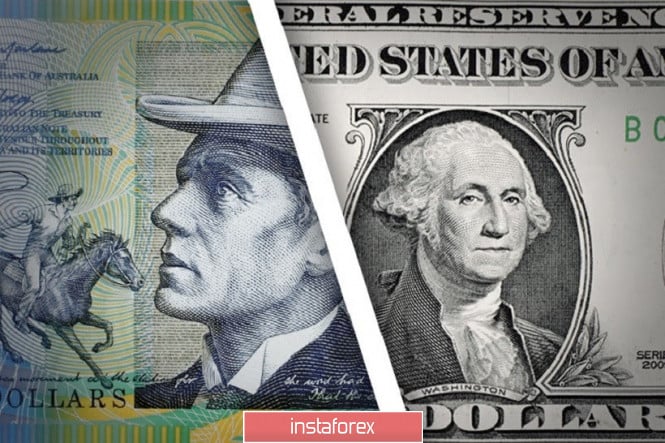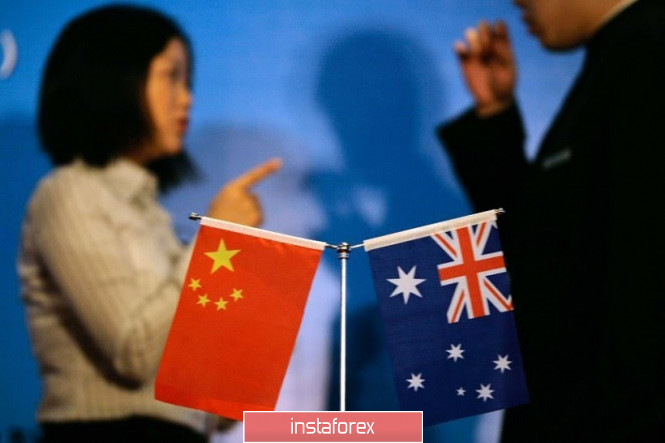Despite the general weakness of the US currency, the AUD/USD pair behaves rather modestly, demonstrating low volatility. The aussie tried to approach the key resistance level of 0.7000 during the Asian session on Thursday – but did not even test the specified price area. The Australian dollar has lost its previous heat and has been besieging an unassailable resistance level for several weeks. It is noteworthy that even a significant decline in the dollar index did not help AUD/USD buyers develop an upward offensive: sellers take the initiative as soon as the price approaches the target of 0.7000, exerting general pressure on the pair.

This state of affairs allows you to implement a simple trading strategy. In fact, this strategy seems to be followed by many market participants: they sell the pair as soon as it approaches the mentioned resistance level. The 0.7000 level is a "hard nut". It served as a reliable support level for many months: in the first half of 2019, the bears permanently tried to go below this target for several months, but they came back each time. The situation acquired a mirror character in the second half of 2019 – the 0.7000 mark became a kind of price outpost, acting as a resistance level. Bulls tried to storm the 70th figure more than ten times, but the price still fell under the round mark in the end. In other words, this target has a special symbolic meaning for the aussie.
Given this background, it is not surprising that most traders open short positions from the level of 0.7000 – because a powerful information driver is needed to overcome it, while many fundamental factors are now playing against the Australian currency.
Let me remind you that the current weakness of the US dollar is due to the coronavirus factor. An anti-record was reported in the United States: the daily incidence rate reached 61,000. The market started talking about another lockdown, the growth of unemployment and the aggravation of the economic crisis.
But the trendy factor put pressure on the aussie. The fact is that in Australia, and to be more precise, in the state of Victoria, an outbreak of COVID-19 was also reported. For this reason, Melbourne, which is the second largest Australian city, has again strengthened the quarantine. Now residents of the five-million-city metropolis will have to stay at home for six weeks. The authorities have also closed the country from internal migration: police and troops are stationed at border crossings, patrolling vast borders with the help of drones.
Such news does not contribute to the growth of the national currency. The Australian economy has just begun to show signs of recovery, so any mention of coronavirus outbreaks in the country will put pressure on the aussie.
Also, don't forget about the long-running political conflict between China and Australia. This conflict between Canberra and Beijing has not faded, but is still developing in a spiral. If at first China imposed relatively minor economic sanctions (in particular, the Chinese increased duties on certain types of Australian goods, while refusing to import beef), then the conflict manifested itself in other areas – for example, representatives of China called on Chinese students not to return to Australian universities "because of racist incidents". A little later, the Chinese security services accused the Australians of spying, and the Australian authorities hinted at the involvement of the Chinese in cyber espionage.
Now Hong Kong has been added to this. Looking ahead, it is worth noting that the Hong Kong issue is a painful one for Beijing. The Chinese authorities consider Hong Kong their full-fledged territory, where the formula "one country – two political systems" operates. Therefore, any comments of foreign politicians on the Hong Kong issue are perceived by the Chinese "with hostility", claiming interference in the internal affairs of the state.

However, Australian Prime Minister Scott Morrison just announced the suspension of the extradition treaty with Hong Kong after the decision of the Chinese authorities to adopt a new law "on ensuring national security" on the territory of this semi-autonomous city. According to him, the Australian authorities do not rule out a "broad interpretation" of the mentioned law, hinting at possible reprisals against the opposition. In addition, the head of the Australian government spoke about other measures to support Hong Kongers in the current situation. In particular, those who are currently in Australia on a work or study visa will be able to extend it for up to five years with the possibility of further obtaining a residence permit.
This position will only worsen the political conflict between Australia and China. At the same time, the resolution of the Australian-Chinese conflict is a prerequisite for the further development of the upward trend. As an alternative, we can assume further weakening of the greenback, but even in this case, the growth of AUD/USD will be unreliable, especially above the 0.7000 mark. Any signals of an escalation of the political conflict will return the aussie to the 69th figure. Thus, you are advised to consider short positions when the pair approaches the resistance level of 0.7000. The support level is 0.6920 - this is the average line of the Bollinger Bands, which coincides with the Tenkan-sen and Kijun-sen lines on the daily chart.
The material has been provided by InstaForex Company - www.instaforex.com